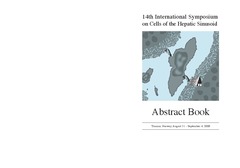| dc.contributor.author | Hicks, Steven Alexander | |
| dc.contributor.author | Riegler, Michael | |
| dc.contributor.author | Pogorelov, Konstantin | |
| dc.contributor.author | Ånonsen, Kim Vidar | |
| dc.contributor.author | de Lange, Thomas | |
| dc.contributor.author | Johansen, Dag | |
| dc.contributor.author | Jeppsson, Mattis | |
| dc.contributor.author | Randel, Kristin Ranheim | |
| dc.contributor.author | Eskeland, Sigrun Losada | |
| dc.contributor.author | Halvorsen, Pål | |
| dc.date.accessioned | 2019-02-05T12:35:05Z | |
| dc.date.available | 2019-02-05T12:35:05Z | |
| dc.date.issued | 2018-07-23 | |
| dc.description.abstract | Neural networks, in the context of deep learning, show much promise in becoming an important tool with the purpose assisting medical doctors in disease detection during patient examinations. However, the current state of deep learning is something of a "black box", making it very difficult to understand what internal processes lead to a given result. This is not only true for non-technical users but among experts as well. This lack of understanding has led to hesitation in the implementation of these methods among mission-critical fields, with many putting interpretability in front of actual performance. Motivated by increasing the acceptance and trust of these methods, and to make qualified decisions, we present a system that allows for the partial opening of this black box. This includes an investigation on what the neural network sees when making a prediction, to both, improve algorithmic understanding, and to gain intuition into what pre-processing steps may lead to better image classification performance. Furthermore, a significant part of a medical expert's time is spent preparing reports after medical examinations, and if we already have a system for dissecting the analysis done by the network, the same tool can be used for automatic examination documentation through content suggestions. In this paper, we present a system that can look into the layers of a deep neural network and present the network's decision in a way that that medical doctors may understand. Furthermore, we present and discuss how this information can possibly be used for automatic reporting. Our initial results are very promising. | en_US |
| dc.description | Source at: <a href=https://doi.org/10.1109/CBMS.2018.00070>https://doi.org/10.1109/CBMS.2018.00070</a> | en_US |
| dc.identifier.citation | Hicks, S.A., Riegler, M., Pogorelov, K., Ånonsen, K.V., de Lange, T., Johansen, D., ... Halvorsen, P. (2018). Dissecting deep neural networks for better medical image classification and classification understanding. <i>IEEE International Symposium on Computer-Based Medical Systems</i>, 363-368. https://doi.org/10.1109/CBMS.2018.00070 | en_US |
| dc.identifier.cristinID | FRIDAID 1616225 | |
| dc.identifier.doi | 10.1109/CBMS.2018.00070 | |
| dc.identifier.issn | 2372-9198 | |
| dc.identifier.uri | https://hdl.handle.net/10037/14620 | |
| dc.language.iso | eng | en_US |
| dc.publisher | IEEE | en_US |
| dc.relation.journal | IEEE International Symposium on Computer-Based Medical Systems | |
| dc.rights.accessRights | openAccess | en_US |
| dc.subject | VDP::Medical disciplines: 700::Clinical medical disciplines: 750::Radiology and diagnostic imaging: 763 | en_US |
| dc.subject | VDP::Medisinske Fag: 700::Klinisk medisinske fag: 750::Radiologi og bildediagnostikk: 763 | en_US |
| dc.subject | Medical diagnostic imaging | en_US |
| dc.subject | Neural networks | en_US |
| dc.subject | Machine learning | en_US |
| dc.subject | Tools | en_US |
| dc.subject | Medical services | en_US |
| dc.subject | Visualization | en_US |
| dc.title | Dissecting deep neural networks for better medical image classification and classification understanding | en_US |
| dc.type | Journal article | en_US |
| dc.type | Tidsskriftartikkel | en_US |
| dc.type | Peer reviewed | en_US |


 English
English norsk
norsk


